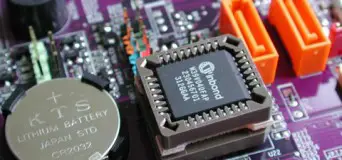BIOS and the POST

When the computer first looks at the BIOS, it begins the power-on self-test (POST) sequence to make sure the components in the computer are present and functioning properly. If the computer does not pass any of these tests, it will encounter an irregular POST. An irregular POST is a beep code that is different from the standard one or two beeps. For example, an irregular POST could generate no beeps at all or a combination of different beeps to indicate the cause of the failure.
If the computer passes POST, it looks at the first 64-bytes of memory located in the CMOS chip, which is kept alive by the CMOS battery even when the computer is turned off. This chip contains information such as the system time and date and information about all the hardware installed in your computer.
After loading the CMOS information, the POST will begin inspecting and comparing the system settings with what is installed in the computer. If no errors are found it will then load the basic device drivers and interrupt handlers for hardware such as the hard drive, keyboard, mouse, floppy drive. These basic drivers allow the CPU to communicate with these hardware devices and allow the computer to continue its boot process.
Next, the POST will check the real-time clock (RTC) or system timer and the computer system bus to make sure both of these are properly working on the computer. Finally, you'll get a picture on your display after the POST has loaded the memory contained on the display adapter and has made it part of the overall system BIOS.
Next, the BIOS checks to see if it's performing a cold boot or warm boot(reboot) by looking at the memory address 0000:0472. If it sees 1234h the BIOS knows that this is a reboot and skips the remainder of the POST steps.
If 1234h is not seen, the BIOS knows that this is a cold boot and will continue running additional POST steps. Next, it tests the computer memory (RAM) installed in the computer by writing to each chip. With early computers, you can see it performing the step as it counts the total installed memory as it's booting.
Finally, the POST will send signals to the computer floppy, optical, and hard drive to test these drives. If all drives pass the test, the POST is complete and instruct the computer to start the process of loading the operating system.
